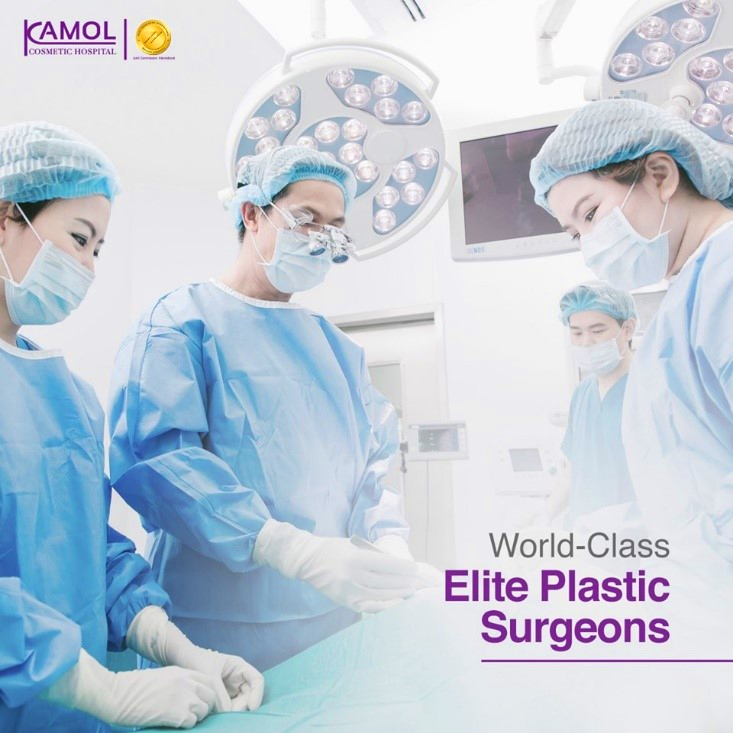Body Lift Surgery in Bangkok, Thailand
Body Lift is a plastic surgery to reduce excess skin, fat, and other tissues that linger after substantial weight loss. Depending on the location of the surplus skin, the lift improves the shape and tone of the underlying tissue that supports skin and fat. Excess sagging skin and fat are removed, and the procedures can improve the dimpled, irregular skin surface.
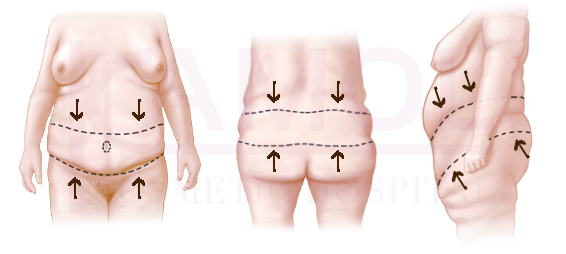
Picture 1. Shows the incision line of the lower body lift
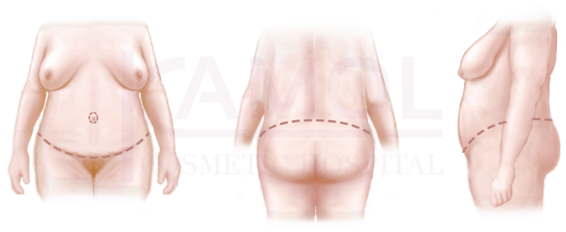
Picture 2. Shows the incision scar on the lower body lift
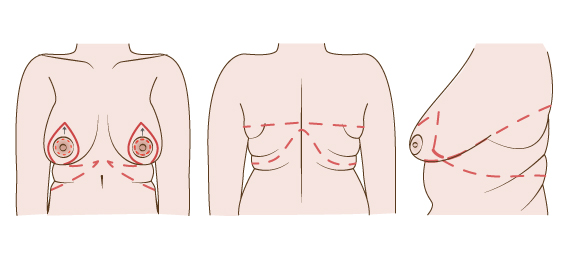
Picture 3. Shows the incision line of the upper body lift
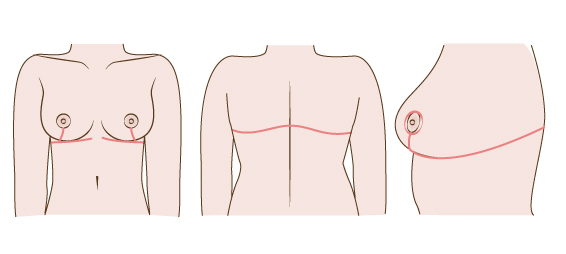
Picture 4. Shows the incision scar on the upper body lift
Body Lift can be performed in these areas
- Abdominal area - the local or extended area around the sides and into the lower back area
- Buttocks
- Thigh - the inner, outer, or posterior thigh or the thigh’s circumference
- Underarm
Truncal Body Lift
Belt lipectomy, or truncal body lift, is the circumferential removal of loose, hanging skin and fat from around an individual's waist or “belt” line. It could be considered an extensive tummy tuck that continues around the sides to remove the loose “love handle” skin that continues onto the lower back.
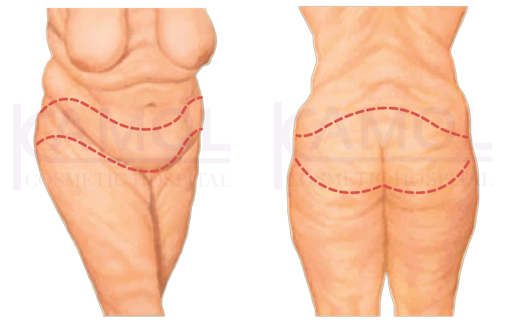
Picture 5.Shows the incision line for belt lipectomy or truncal body.
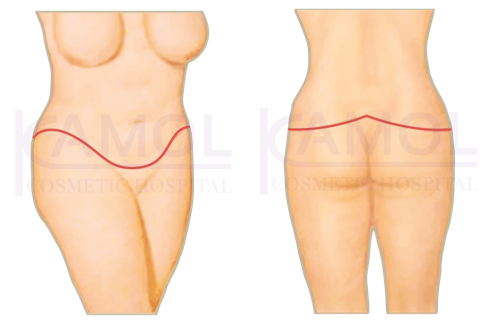
Picture 6. Shows the incision scar for belt lipectomy or truncal body.
A Good Candidate for Body Lift
Those with significant soft tissue looseness in one or multiple body areas include
- You have undergone bariatric surgery or too much weight loss
- You have skin laxity, excess skin, sagging of the bullock and abdominal wall
- You have to accept a circumferential scar around your waist
- Your weight has been stable for at least 1 year
- Healthy
- You have a realistic expectation and positive attitude for the body lift
- Nonsmokers
- You have a healthy diet, such as protein deficiency problems can interfere with healing.
Preparing for Body Lift Surgery
- Consult the surgeon and get the lab test to evaluate the physical health of underlying general anesthesia.
- Take certain medications or adjust your current medication.
- Stop smoking
- Avoid taking aspirin, anti-inflammatory drugs, and herbal supplements, as they can increase bleeding.
Body Lift Procedure
- Step for under general anesthesia
- The surgeon marks the incision site in the area required to remove the excess fat and skin. Many parts of the body involve body lifts, including the abdominal area around the sides and into the lower back area. They will mark the incision by hiding the scar, such as in the bikini line or bra line or in clothing or swimsuits.
- The surgeon opens the incision and removes excess fat and skin as much as possible, then repositions, reshapes, and tightens the tissues around the area.
- Close the incisions; the deep suture will support the new shape using the absorbable suture, and the skin will be fixed by absorbable sutures. And the incision skin stitches.
Post-operative Care for Body Lift
After the procedure, most patients stay in the hospital for several days.
- Wearing compression garments after surgery for at least 6-8 weeks to support your body and decrease swelling. In some cases, they will need to wear leg stockings and have heparin injections to prevent DVT
- Sleep with the torso slightly elevated to control bruising and swelling.
- During the day following the surgery, you might slightly move your body or get out of bed to walk to prevent DVT.
- Avoid heavy lifting, strenuous exercise, swimming, and strenuous sports for at least six weeks
- Wear some comfortable clothes that are easy to remove.
- You have to follow up on all the appointments.
- Take stitches off seven days following surgery.
- Keep clean and dry the incision wound.
Risks and Complications of Body Lift Surgery include
- Anesthesia risks
- Bleeding (hematoma)
- Infection
- Poor wound healing
- Fluid accumulation (blood or serum)
- Numbness or other changes in skin sensation
- fat necrosis
- Pain
- Recurrent looseness of skin
- Persistent swelling in the legs
- Asymmetries
- Deep vein thrombosis, cardiac and pulmonary complications
- The possible need for revision surgery
- Skin loss as sutures may spontaneously surface through the skin and become visible or cause irritation. This requires removal
- Unfavorable scarring
Recovery from Body Lift Surgery
You will feel discomfort for a few weeks, including bruising, swelling, and numbness around the incision. Full circumferential incisions may take four weeks or more. You can return to work for a few weeks and avoid strenuous exercise for at least 6-8 weeks. The scars will be permanent and fade in a year but can be hidden by clothing.
Getting to Know for Body Lift Surgery
What is Full 360 Body Lift?
A full 360 body lift, also known as a circumferential body lift, is a surgical procedure that involves the removal...
Why is Body Lift have to be performed in multiple sessions?
Body Lift is a cosmetic surgical procedure that removes excess skin and fat from the body,...
Body Lift after sleeve gastrectomy
Body lift is a cosmetic surgery procedure that is designed to reshape and tone the body
Before & After for Body Lift Surgery
Reviews for Body Lift Surgery
Does Body Lift obliterate the fat?
A body lift is designed to remove excess skin and fat from the lower and middle portions of the body, such as the abdomen, hips, thighs, and buttocks. However, it is not meant to be a weight loss procedure and will not remove all of the fat from these areas. Liposuction, often performed in conjunction with a body lift, can help remove excess fat, but it is not a substitute for weight loss and healthy eating.
It's important to note that body lift is a procedure to reshape and contour the body by removing excess skin, not to remove all the fat. The best candidates for body lift are those who have lost significant weight and have excess skin that cannot be corrected with diet and exercise alone. It's important to have realistic expectations and understand that body lift is not a weight loss but a body contouring procedure.
What is a Full 360 Body Lift?
A full 360-degree body lift, also known as a circumferential body lift, is a surgical procedure that involves removing excess skin and fat from the entire circumference of the lower body. This includes the abdomen, hips, thighs, buttocks, and even the upper thighs, back, and waist. This procedure is typically performed after significant weight loss and is designed to remove excess skin and fat and contour the entire body.
The surgery is typically performed under general anesthesia and may take several hours to complete, depending on the extent of the procedure. The incision is typically made around the waistline, removing excess skin and fat. The remaining skin is then tightened and repositioned to create a smoother, more toned appearance.
Recovery time for a full 360 body lift can be longer than for a traditional body lift. Patients should expect to take several weeks off from work to allow time for recovery. They must follow strict post-operative instructions to ensure a safe and successful recovery.
How long does it take to recover from a Body Lift?
Recovery time after a body lift can vary depending on the extent of the procedures performed and the individual's health and healing abilities. Generally, patients can expect to take a few weeks from work to allow time for recovery.
- During the first few days following the surgery, patients may experience pain, swelling, and discomfort. They will be given pain medication to help manage these symptoms.
- Stitches will be removed within 7-10 days after the surgery.
- It is important to Avoid strenuous activities and keep the incision areas clean and dry for the first few weeks after the surgery is important.
- Swelling and bruising will gradually subside over the course of several weeks.
- Most patients can return to work and other normal activities within 2-4 weeks after the surgery.
- Patients are advised to avoid strenuous physical activity for a few weeks after the surgery and to wear a compression garment to help minimize swelling and support the newly contoured areas of the body.
- The final result of the surgery can be seen after 6-12 months, as the healing process is complete and the swelling subsides.
Following the surgeon's post-operative instructions is important to ensure a safe and successful recovery.
What are the procedures included in Body Lift?
A body lift typically includes the following procedures:
- Abdominoplasty (Tummy tuck): This procedure involves removing excess skin and fat from the abdomen and tightening the abdominal muscles.
- Liposuction: This procedure involves using a hollow stainless steel tube (cannula) and a powerful suction device to remove excess fat from specific body areas.
- Belt lipectomy or Lower body lift: This procedure involves removing excess skin and fat from the hips, thighs, and buttocks and tightening the underlying muscles.
- Medial thigh lift: This procedure involves removing excess skin and fat from the inner thighs and tightening the underlying muscles.
- Arm lift (Brachioplasty): This procedure involves removing excess skin and fat from the upper arms and tightening the underlying muscles.
- Breast lift (Mastopexy): This procedure is done to lift and reshape the breasts.
Depending on the patient's need, these procedures can be done individually or combined.


















